Friday-Sunday, November 4-6, 2011
The Wave, located just south of the Utah-Arizona state line in the Vermilion Cliffs Wilderness Area, is one of those places that every photographer and hiker wants to visit. It’s hard to blame them because it is such a unique and amazing area. Unfortunately, because of it’s popularity, the BLM has a permit system in place that allows only twenty people per day the chance to experience this remarkable area. If you’ve read my blog for any length of time you might know that I am averse towards any kind of permit when I go out exploring, so in the past I have usually avoided those places. This year I have made an effort to finally visit some of those places that require a permit, including The Maze and the White Rim. A few months ago I decided that I would try to get a permit so that I could hopefully visit The Wave this year, too. Since there are only 20 permits per day, it can be difficult to obtain one. For anyone not familiar with the Coyote Buttes North permit system, ten of the permits for each day are awarded in a lottery three months in advance and the other ten are distributed in person the day before. I guess I was pretty lucky since I managed to snag two permits in advance on my first try. Once I had my permits, Amanda and I decided to make a long three day weekend out of the trip.
We left early on Friday morning and drove down through Monument Valley since Amanda hadn’t been through there before. Shortly after passing through Kayenta we turned off the main highway so we could make a quick visit to Navajo National Monument. We took the short Sandal Trail to on overlook of the Betatakin Ruins. The viewpoint was still pretty far away from the large alcove containing the ruins so I’m glad I had my long lens with me. We were lucky that most of the ruins were all in the sunlight, so I didn’t have to deal with a large shadow in part of the scene.

Navajo National Monument by IntrepidXJ, on Flickr
This huge alcove contains the Betatakin Ruins.
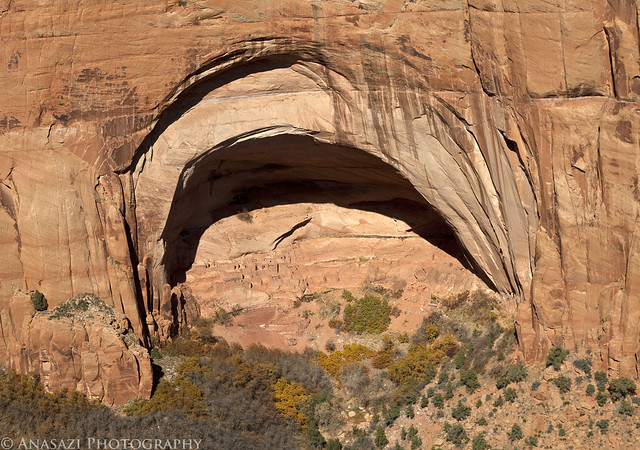
Betatakin Alcove by IntrepidXJ, on Flickr
A closer look at the ruins found here.
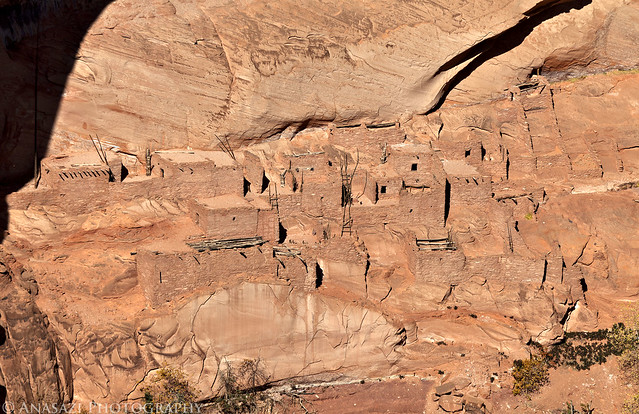
Betatakin Ruins by IntrepidXJ, on Flickr
Here’s a view of the large alcove in it’s canyon setting for a little better sense of scale.
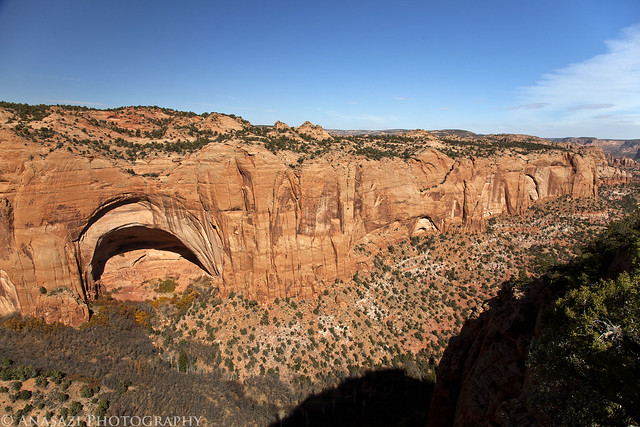
Betatakin Overlook by IntrepidXJ, on Flickr
In the future I am going to have to return to the park and take the ranger-guided tour down to the ruins, which is only offered on the weekends during this time of the year. I’d also like to make the trek to Keet Seel one day, too.
From Navajo National Monument we countinued across the Navajo Nation to Page, Arizona. Amanda hadn’t been here before so I took her over to the Glen Canyon Dam Visitor’s Center so that she could check it out. After checking into our hotel and grabbing some dinner we headed over to the Horseshoe Bend overlook for sunset. At first it looked like there might be an awesome sunset, but in the end there was only one small section of the sky that got any color. It was still a cool place to photograph at sunset.
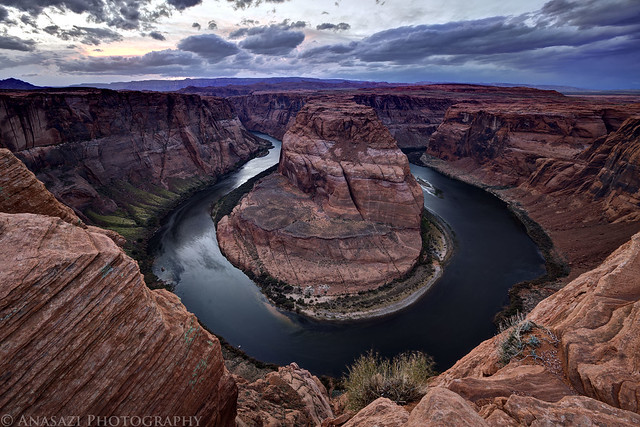
Horseshoe Bend by IntrepidXJ, on Flickr
On Saturday morning we were up bright and early so we could visit The Wave. We drove to the Wire Pass Trailhead, where we found only one other vehicle, and then started the hike to The Wave. It was a cold and windy morning, and was supposed to stay that way all day. When we started the hike there was a thin layer of snow and ice on the ground, but as soon as the sun came out, it all melted off. The wind and the quick moving clouds made for some great skies and constantly changing lighting conditions for photography, but also kept us cold and sand-blasted us all day.
Here’s a few photos I took on our hike to reach The Wave. There is spectacular scenery all over the place!
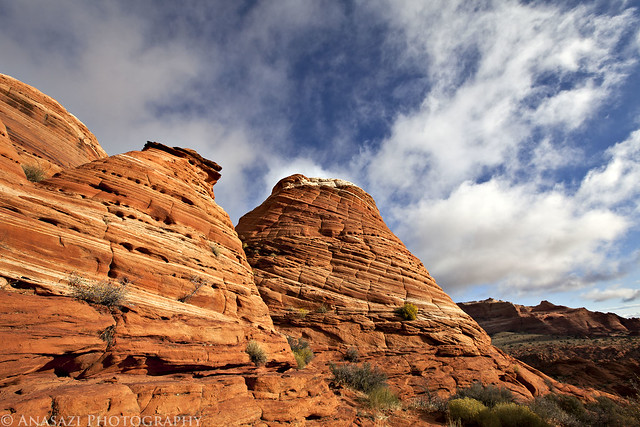
Hiking Scenery by IntrepidXJ, on Flickr
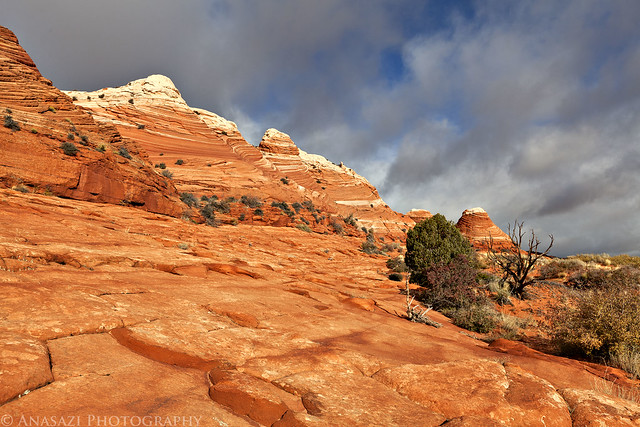
Sandstone by IntrepidXJ, on Flickr

Scenery by IntrepidXJ, on Flickr
After a few miles of hiking we finally reached The Wave! Again we got lucky here, too. The one vehicle in the parking lot belong to a guy who had hiked in even earlier than us. By the time we reached The Wave he was heading off to do some more exploring elsewhere. We had the place to ourselves for a few hours to explore and photograph as we pleased. We didn’t see another person until after lunchtime. It was great! This is an amazing place, so I’ll let the photos speak for themselves…
This is probably one of my favorite photos from the day taken in a narrow passage with nice reflected light.
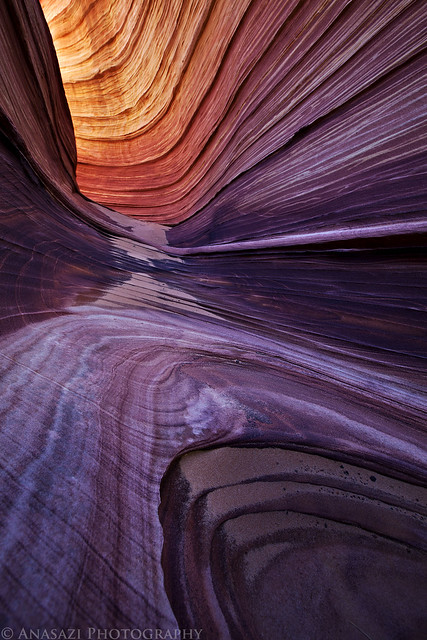
The Passage by IntrepidXJ, on Flickr
There are so many different lines found here to have fun with!

Colors & Lines by IntrepidXJ, on Flickr
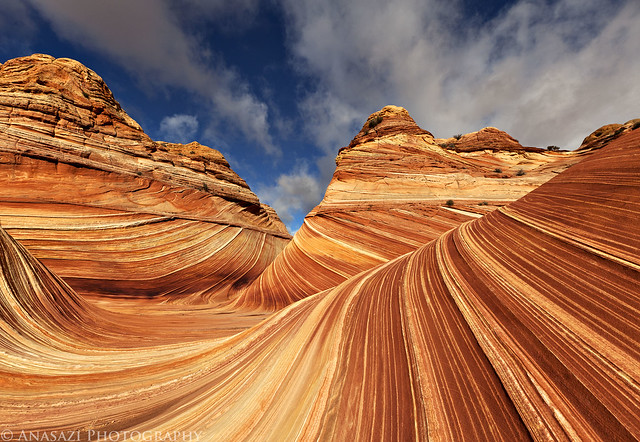
Wave I by IntrepidXJ, on Flickr

Wave II by IntrepidXJ, on Flickr
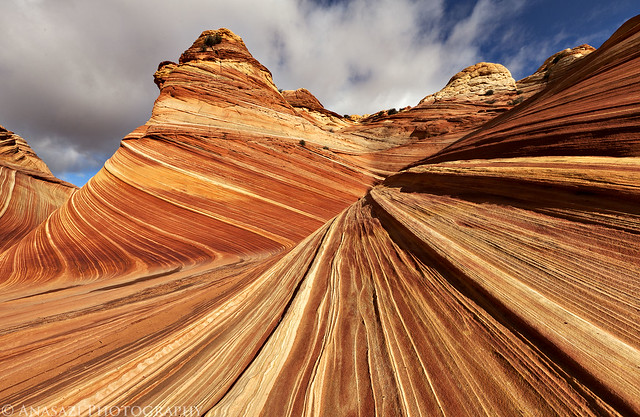
Wave III by IntrepidXJ, on Flickr
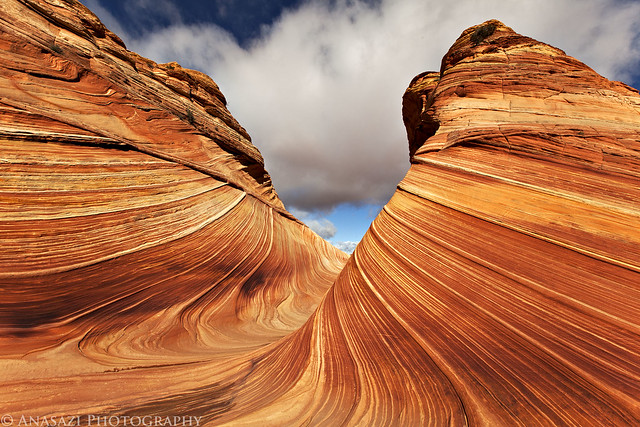
Wave IV by IntrepidXJ, on Flickr
Since this was our first visit to Coyote Buttes North, we spent most of the time in the vicinity around The Wave and didn’t explore too much of the surrounding area. I did end up doing a little exploring nearby and climbed up for a higher view of the area. I had wanted to visit Melody Arch but the wind and blowing sand was pretty bad the higher I climbed, so I changed my mind about that one. I will have to do some more exploring of the area when I return in February for my birthday weekend!
A view from above. Part of The Wave can be seen in the middle-left.

Wave Overview by IntrepidXJ, on Flickr
A moderate-sized hoodoo high above Coyote Buttes North.
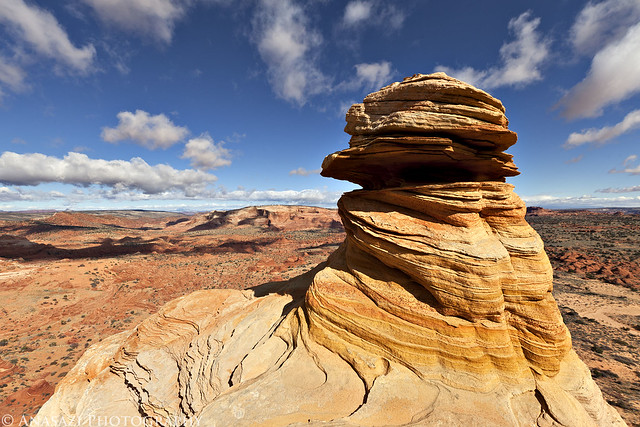
Above by IntrepidXJ, on Flickr
A little goblin and plenty more colorful sandstone to be found.
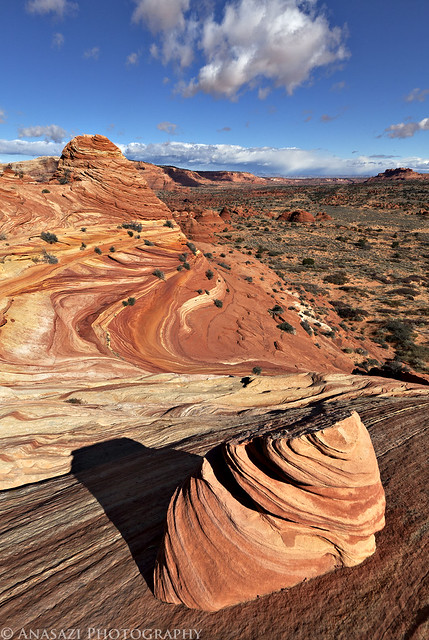
The Goblin by IntrepidXJ, on Flickr

Great View by IntrepidXJ, on Flickr
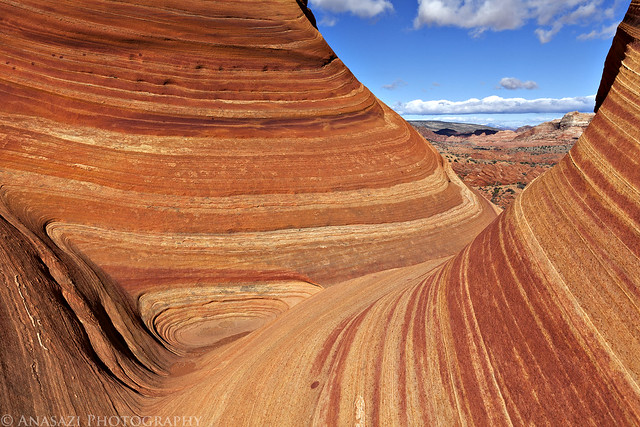
The Middle by IntrepidXJ, on Flickr
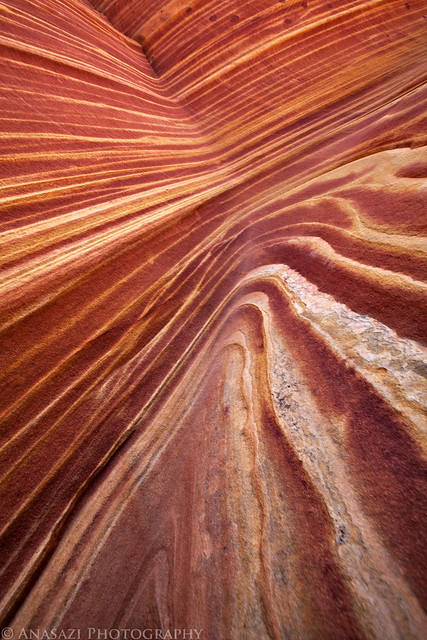
Stripes by IntrepidXJ, on Flickr
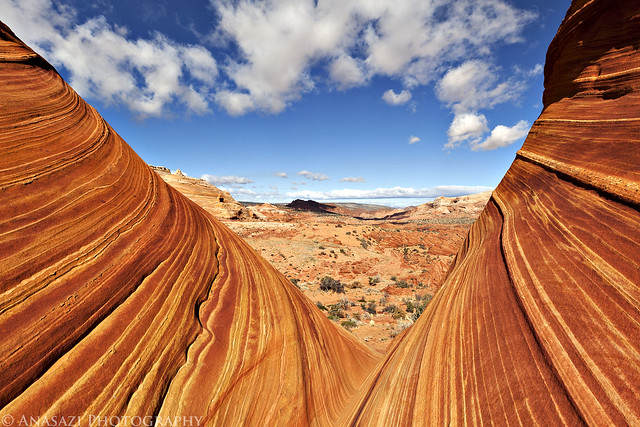
Framed View by IntrepidXJ, on Flickr
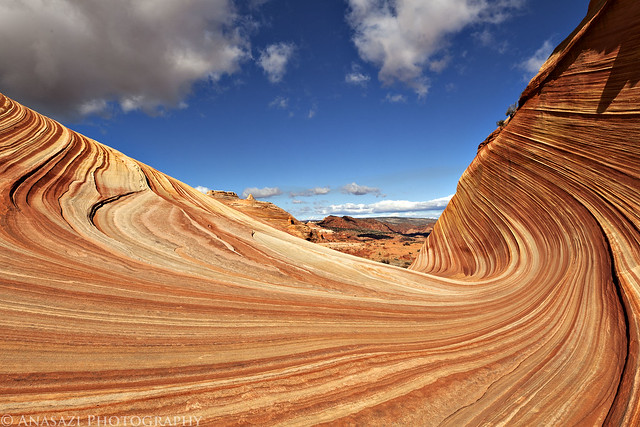
Wave Frame by IntrepidXJ, on Flickr

Wave V by IntrepidXJ, on Flickr
This is another photo of ‘The Passage’ but with a different composition and in different light. It’s amazing how much different it looks in different lighting.
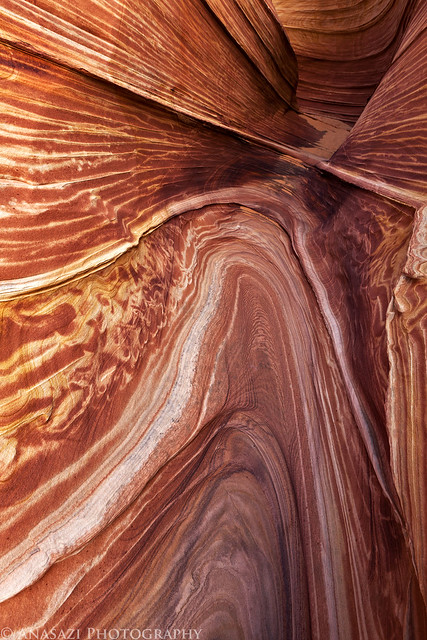
Passage II by IntrepidXJ, on Flickr
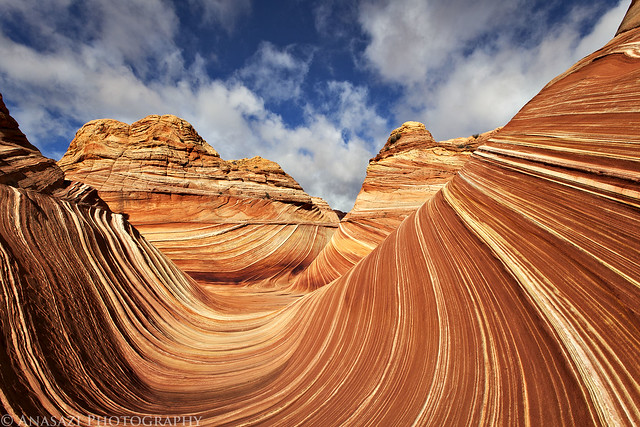
The Wave VI by IntrepidXJ, on Flickr
I would have liked to stay until sunset, but the cold, wind and sand had taken their toll on us so we headed back to the Jeep a little early.
One more photo I took as we hiked back to the Wire Pass Trailhead.
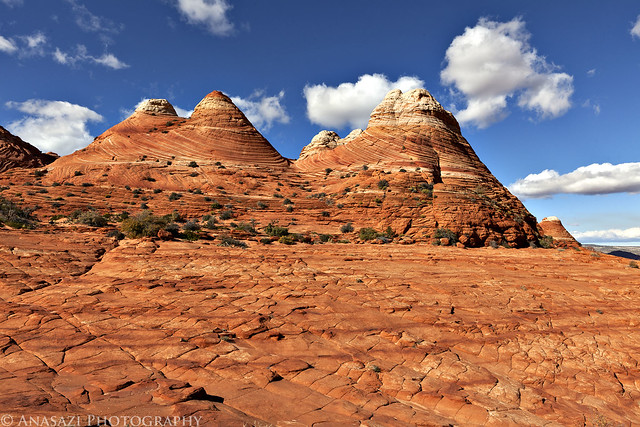
Hiking Back by IntrepidXJ, on Flickr
Before leaving the area I made another quick stop at the Notch Panel so that I could get some better photos of it. The last time I was here I grabbed the wrong lens and forgot my polarizer in the Jeep when Jared and I hiked to this panel. Plus, since it was in the morning shade then, I thought it would photograph better in the late afternoon sunlight…I think I was right.
The main petroglyph panel in it’s setting.
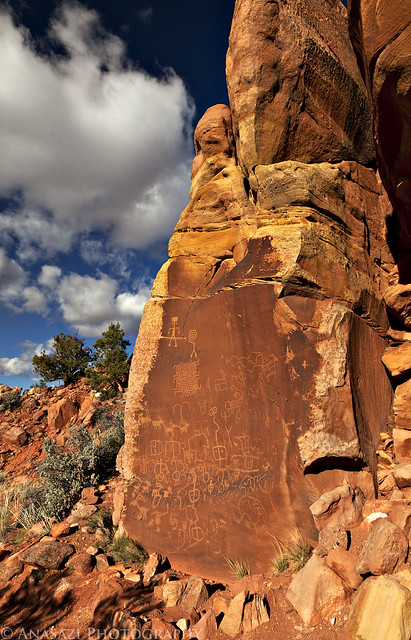
The Notch Panel by IntrepidXJ, on Flickr
A closer look at the most unique figures in this panel.
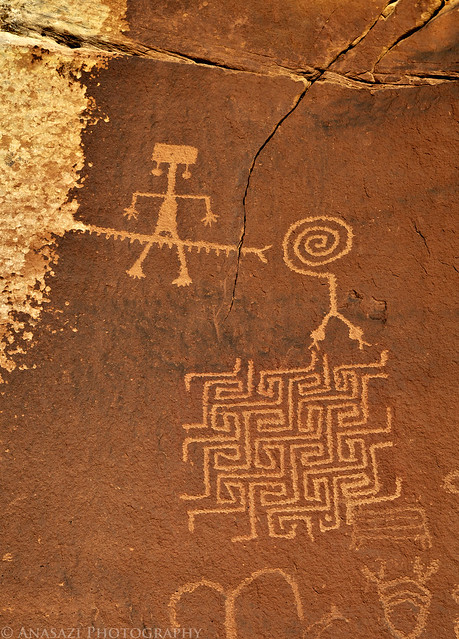
Two-Headed Snake & Maze by IntrepidXJ, on Flickr
Detail in the lower portion of the panel.
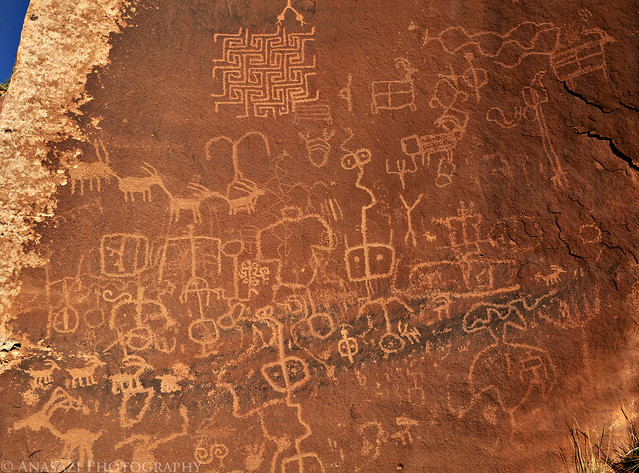
Notch Detail by IntrepidXJ, on Flickr
We decided to take the long and scenic drive back to Page by following the House Rock Valley Road south to the highway and completing a loop around the Vermilion Cliffs. We stopped when we reached the Navajo Bridges over the Marble Canyon of the Colorado River so that we could walk across the old one. Construction of the original Navajo Bridge began in 1927, and the bridge opened to traffic in 1929. During the design phase, a wider roadway was considered, but ultimately rejected, as it would have required a costly third arch to be added to the design, and the vehicles of the time did not necessitate the wider road. In 1990, however, it was decided that the traffic flow was too great for the original bridge, and that a new solution was needed. The sharp corners in the roadway on each side of the bridge’s approach had become a safety hazard due to low visibility, and the deficiency in the original design’s width and load capacity specifications were becoming problematic. The bridge had also become part of U.S. Route 89A. The new steel arch bridge was completed in September 1995 at a cost of approximately $15 million.
A view of the newer Navajo Bridge and the Echo Cliffs taken from the older bridge. Look closely under the bridge and you might spot a large black bird.
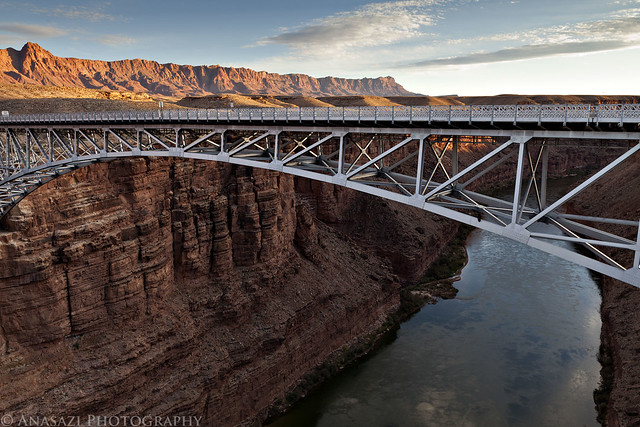
Navajo Bridge by IntrepidXJ, on Flickr
While walking across the bridge I noticed a large black bird sitting underneath the newer bridge. At first I didn’t think much of it and just assumed it was another Raven which I see all the time, but quickly I realized just how large this bird actually was compared to the beam it was sitting on. There was no way it could be a Raven at that size! I took a quick photo and zoomed in on the bird on my LCD screen when I noticed the bird was tagged with a number. That’s when I realized that this was one of the few endangered California Condors that were released in the Grand Canyon area. The California Condor is actually the largest bird in North America with a wingspan of over 9 feet and a weight up to 29lbs. It is also one of the world’s longest-living birds, with a lifespan of up to 60 years. Surprisingly, in 1987 there were only 22 condors in existence and all of them were in captivity. The California Condor Recovery Plan has helped to try and restore their population. As of October 2010, the wild condor population in California reached 100 individuals, and there were 73 wild condors in Arizona. I went back to the Jeep and grabbed my long lens so I could get a closer look and photo.
A close look at the California Condor. Those claws look big and sharp!
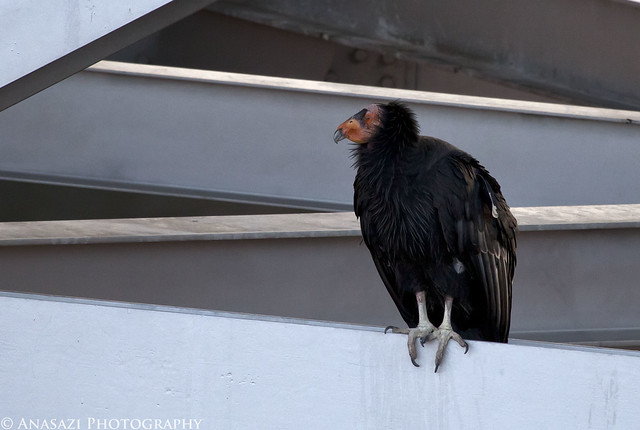
California Condor by IntrepidXJ, on Flickr
As we drove along the Echo Cliffs I stopped for a couple of road-side photos as the sun was setting.
The Echo Cliffs catching the last rays of sunshine for the day
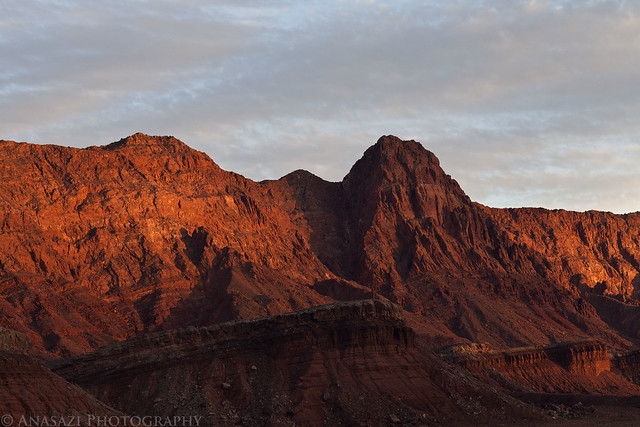
Echo Cliffs Sunset by IntrepidXJ, on Flickr
Great scenery along this stretch of the road.
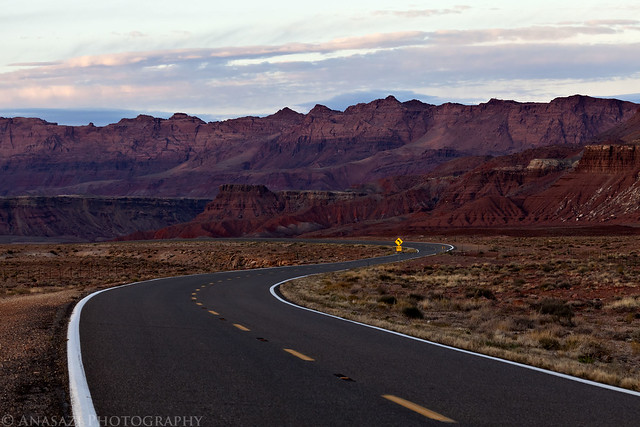
Curve by IntrepidXJ, on Flickr
Looking back at the Vermilion Cliffs after the sun dipped below the horizon.
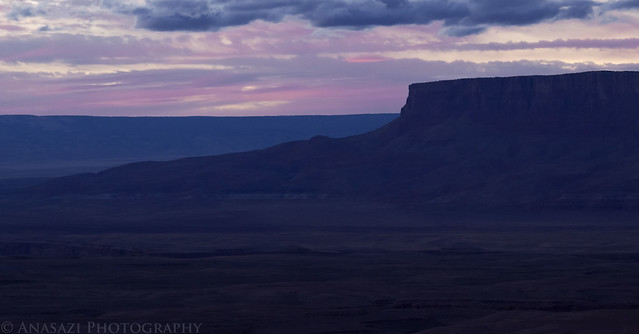
Vermilion Cliffs Sunset by IntrepidXJ, on Flickr
On Sunday morning we slept in a little and then left our room to go get some breakfast. As soon as we walked outside we saw that there were hot air ballons everywhere! It was an unexpected surprise. Apparently we were there on the same weekend as the Annual Page / Lake Powell Balloon Regatta and had no clue until we saw the balloons in the sky. I headed back into the room and grabbed my camera for a few photos. Then we had some breakfast and went back out to chase a few more balloons before leaving town.
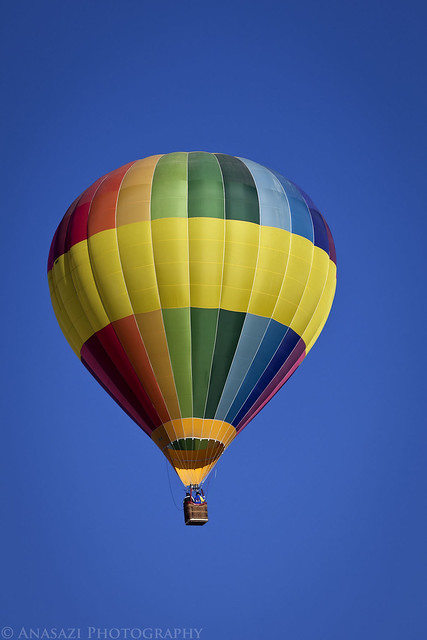
Rainbow by IntrepidXJ, on Flickr
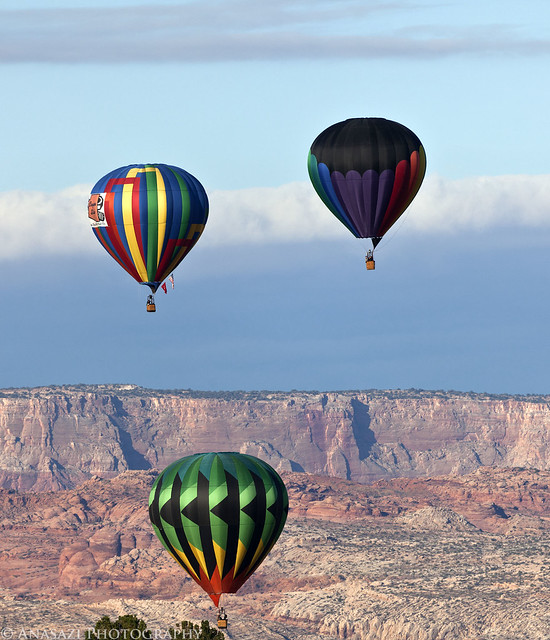
Cliffs & Balloons by IntrepidXJ, on Flickr
Apparently we had not paid close enough attention to this sign the previous days we were in town…
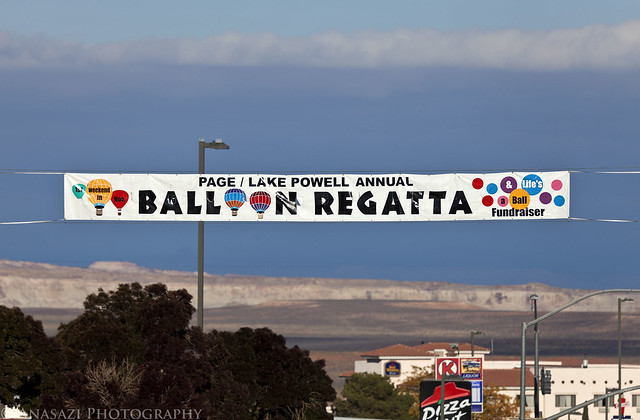
Page Balloon Regatta by IntrepidXJ, on Flickr
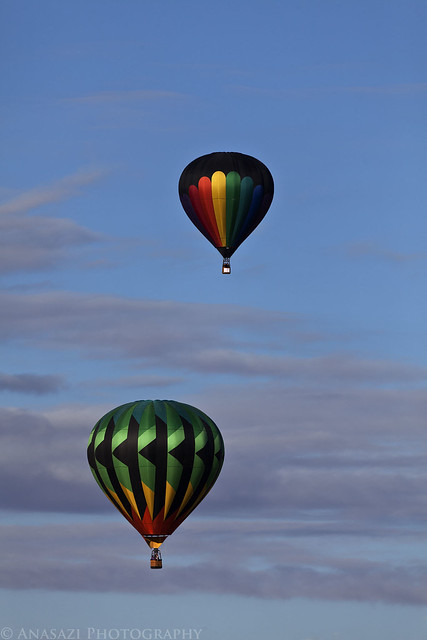
Two Balloons by IntrepidXJ, on Flickr
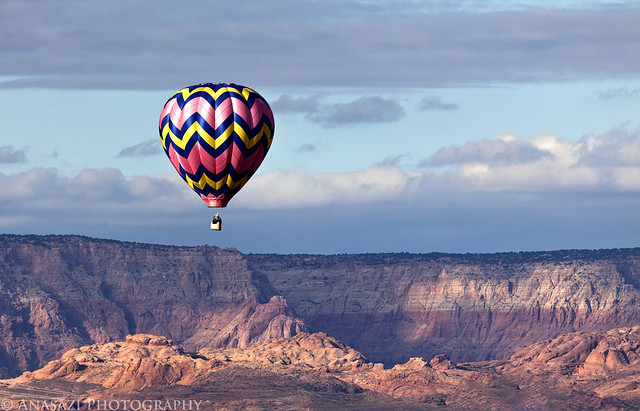
Flying Low by IntrepidXJ, on Flickr
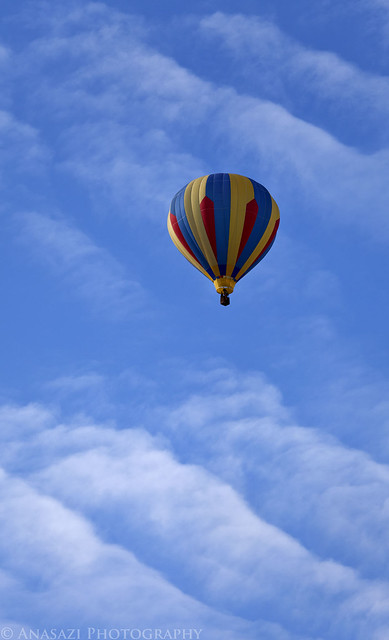
Balloon & Clouds by IntrepidXJ, on Flickr

Flame by IntrepidXJ, on Flickr
Just outside of town we found a bunch of them landing.
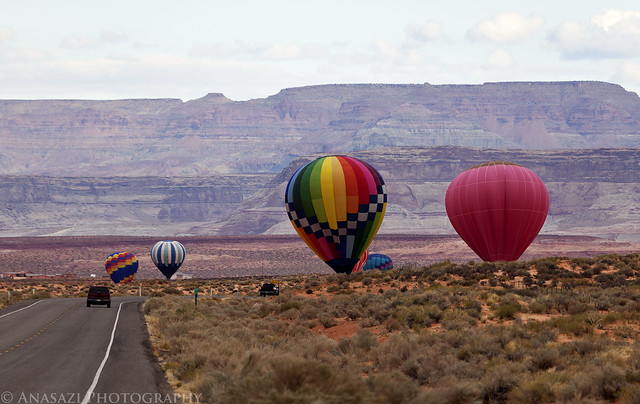
On the Ground by IntrepidXJ, on Flickr
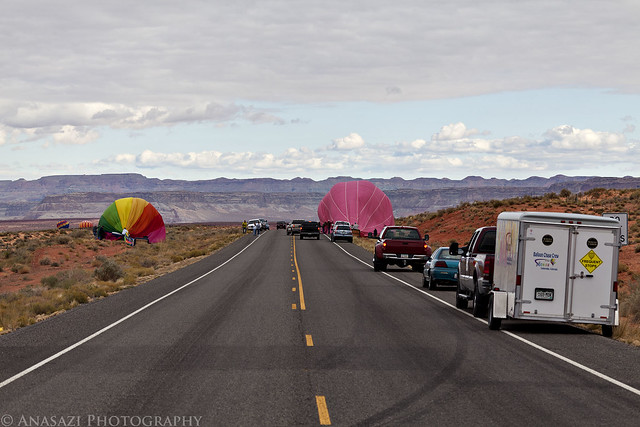
Landing by IntrepidXJ, on Flickr
Anyone who has visited the area has most likely noticed the Navajo Generating Station smokestacks just outside of Page. While I’m sure most consider them a scar on the landscape, I still thought they were interesting enough to take a photo of.
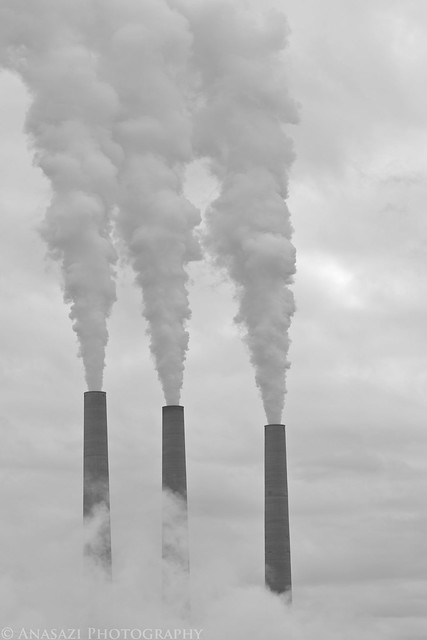
Smokestacks by IntrepidXJ, on Flickr
When we were done chasing balloons around we made one last stop at Lower Antelope Canyon so that I could check it out. This is another place that is popular with photographers and tourists. Upper Antelope Canyon is the more popular of the two slot canyons, but I decided to avoid that one since it requires staying with a guide the whole time. I was hoping I might find a little more solitude in Lower Antelope Canyon…and I was right. I got the photographer’s pass and ended up having the slot canyon to myself for about two hours.
Lower Antelope Canyon became well-known on August 12, 1997 when eleven tourists were killed by a flash flood. You can find out more about that incident at this link if you are interested.
The Navajo guide leading me down into the entrance of the slot canyon. You can see a few hot air balloons in the sky in the distance.

Entrance by IntrepidXJ, on Flickr
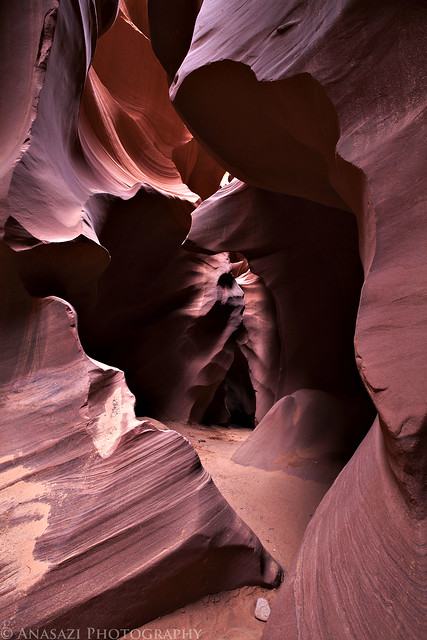
Lower Antelope I by IntrepidXJ, on Flickr
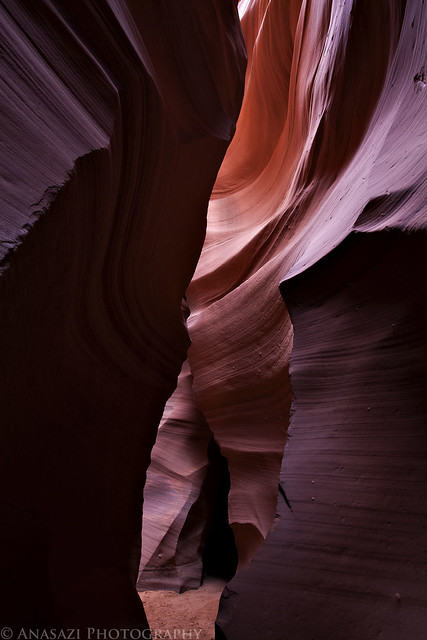
Lower Antelope II by IntrepidXJ, on Flickr

Lower Antelope III by IntrepidXJ, on Flickr
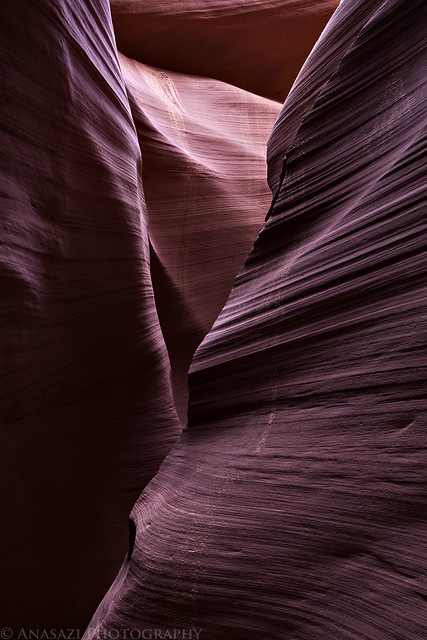
Lower Antelope IV by IntrepidXJ, on Flickr
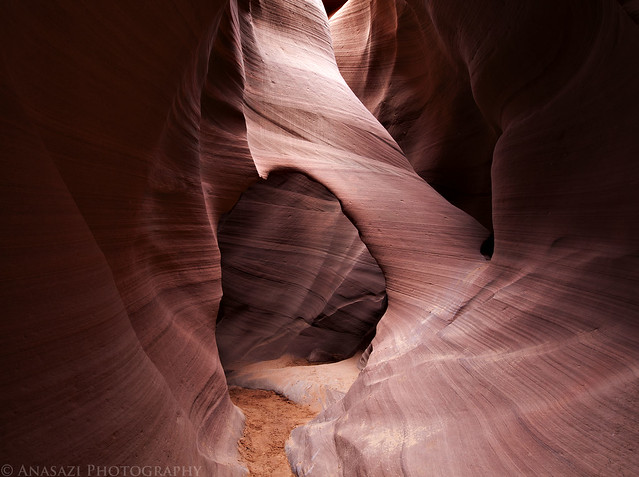
Antelope Arch by IntrepidXJ, on Flickr
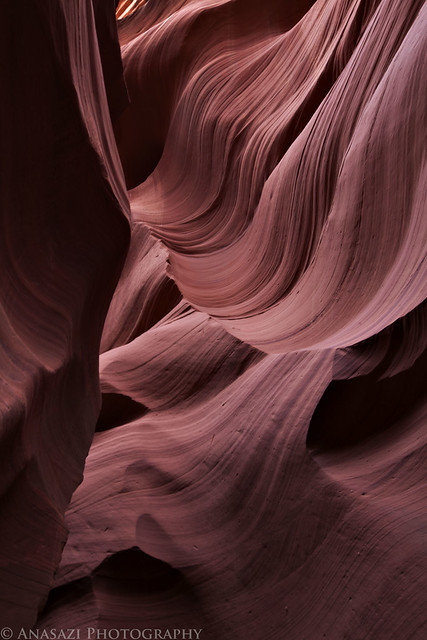
Ripples by IntrepidXJ, on Flickr
After the flash flood that killed 11 tourists in 1997 the canyon was closed for a while. When it did finally reopen to the public stairs were installed to make it a bit easier to get in and out.
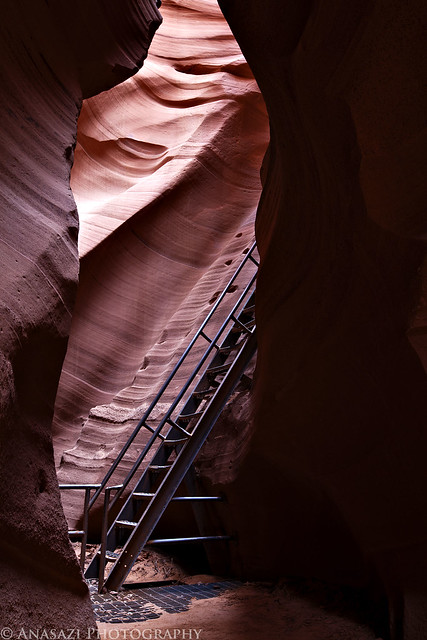
Canyon Stairs by IntrepidXJ, on Flickr
This is the last set of stairs that take you out of the slot canyon and back up top.
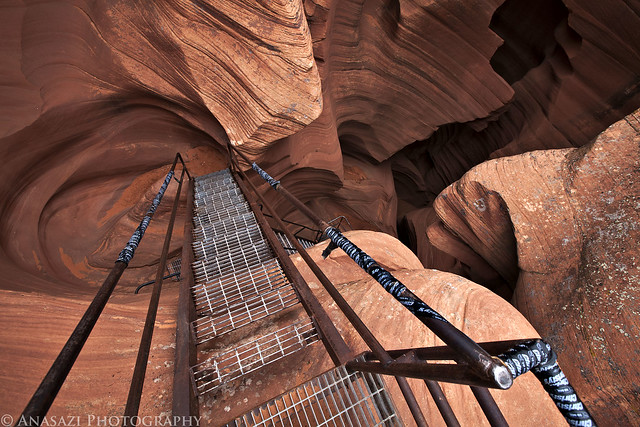
Exit by IntrepidXJ, on Flickr
The end of Lower Antelope Canyon.

The End by IntrepidXJ, on Flickr
When I got back out of Lower Antelope Canyon we had an uneventful drive home which ended our fun-filled weekend. I can’t wait to get back!
>> Navajo National Monument & Page Photo Gallery
>> The Wave Photo Gallery
>> Page / Lake Powell Balloon Regatta Photo Gallery
>> Lower Antelope Canyon Photo Gallery
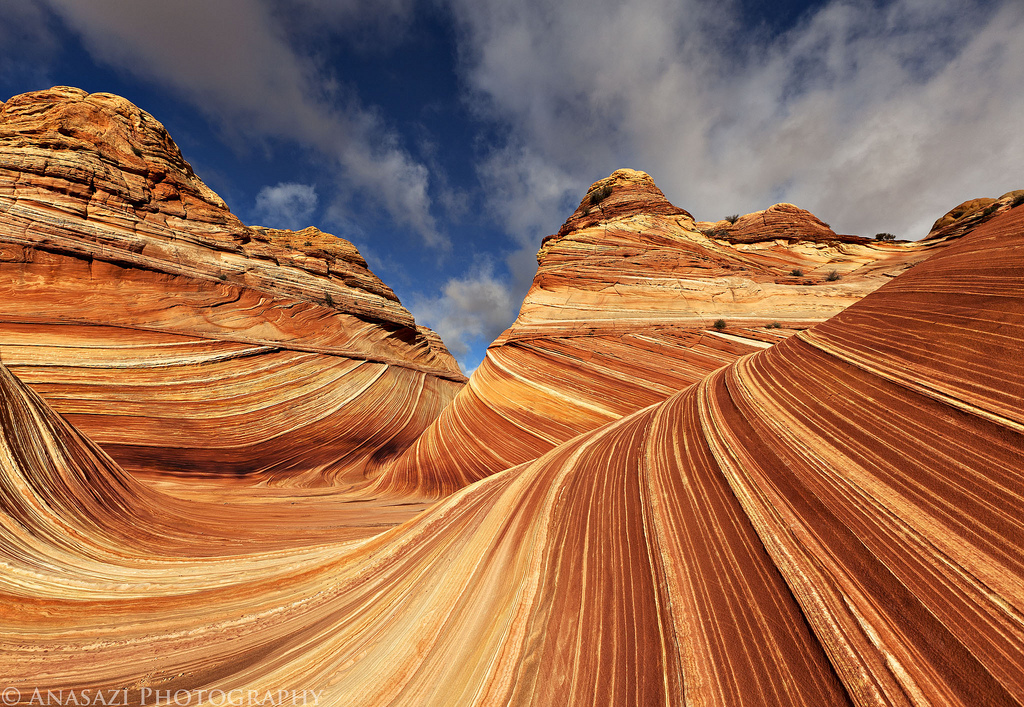
One of these years I’m going to have to plan on attending that hot air balloon regatta. I’ve seen some amazing timelapses from it.
Hey Randy,
Great trip report with lots of sweet images! I really enjoyed reading this one. Hope you make it back to Coyote Buttes North to check out some of the outlying areas (incl. Melody Arch). I went there in Feb. once and it was a drop dead gorgeous day!
Thank you John….I’m hoping for nice weather in Feb!
Great photos and write up as always.